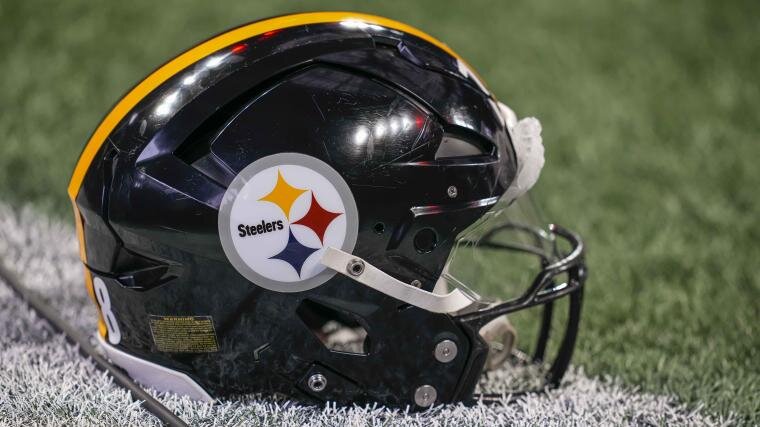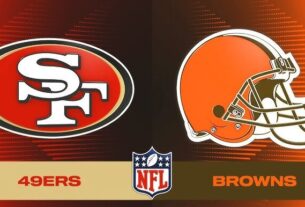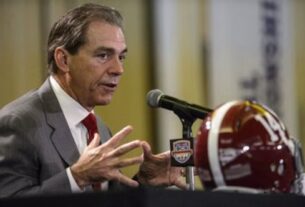The Good, The Bad, and The Ugly: An Interesting Story About the Pittsburgh Steelers
The Pittsburgh Steelers are one of the most storied franchises in the NFL, with a rich history that spans more than 90 years. From the highs of multiple Super Bowl championships to the lows of seasons marked by underperformance and turmoil, the Steelers’ journey has been a rollercoaster. Throughout it all, their fans have remained loyal, and the team’s identity has remained rooted in a blue-collar, hard-nosed style of football that reflects the city of Pittsburgh itself. The story of the Steelers is one of triumph and failure, of legacies built and broken, and of a team that has found ways to reinvent itself while holding onto what makes it special.
To truly appreciate the story of the Steelers, it’s useful to break it down into three distinct categories: The Good, The Bad, and The Ugly. This structure helps us understand the evolution of the team, from its best moments to its darkest days, and shows how it all fits together in a way that still resonates with fans today.
The Good: Triumphs of the Steelers
Super Bowl Success: The Hallmark of the Steelers
When discussing the good in the history of the Pittsburgh Steelers, the first thing that comes to mind is their Super Bowl success. The Steelers have won six Super Bowl titles, tied for the most in NFL history with the New England Patriots. These victories came in four decades: the 1970s, 2000s, and 2010s, making them a consistently successful franchise across multiple eras.
The 1970s Steelers are often regarded as the team’s golden era. Under the leadership of head coach Chuck Noll, Pittsburgh built a dynasty that dominated the NFL during the decade. The defense, famously known as the “Steel Curtain,” was the backbone of the team’s success. Featuring legends like “Mean” Joe Greene, Jack Lambert, Jack Ham, and Mel Blount, the Steelers’ defense was nearly unstoppable. Paired with an offense led by quarterback Terry Bradshaw and the powerful running of Franco Harris, the Steelers captured four Super Bowls in a six-year span (1974, 1975, 1978, and 1979).
Bradshaw, a Hall of Fame quarterback, was pivotal in those championships. His ability to perform in clutch situations, including his iconic Super Bowl X MVP performance, cemented his place in the history of the league. Franco Harris, with his famous “Immaculate Reception,” became one of the most beloved figures in Pittsburgh sports history.
The 2000s brought another period of success, with head coach Bill Cowher leading the team to another Super Bowl win in 2005 and a dominant performance in Super Bowl XL. The defense of the 2000s, often known as the “Blitzburgh” defense, was once again the team’s strength, featuring players like Troy Polamalu, James Harrison, and Casey Hampton. Quarterback Ben Roethlisberger, a two-time Super Bowl champion, emerged as the face of the franchise during this period and would go on to define the team’s offense for over a decade.
Even in recent years, the Steelers have remained competitive, with solid regular-season performances and playoff appearances. While the team’s Super Bowl appearances may be fewer in the 2010s and beyond, Pittsburgh has maintained a consistent level of excellence, rarely falling into mediocrity. The franchise has become synonymous with stability, both in terms of leadership (with Mike Tomlin at the helm) and its commitment to developing talent through the draft. The Steelers’ ability to maintain success through the decades, adapting to different NFL eras while staying true to their identity, is a testament to the organization’s commitment to winning.
The Steelers’ Fanbase: A Loyalty Like No Other
Another aspect of “The Good” for the Steelers is their fanbase. Pittsburgh is known for having one of the most passionate and dedicated fanbases in all of sports. Steelers fans are known for their “Terrible Towels,” a symbol of fan pride that has become synonymous with the team’s spirit. These fans are not only present in Pittsburgh but can be found across the country and around the world. Whether the Steelers are winning or losing, their fans are consistently among the most devoted in the NFL.
A Culture of Excellence and Stability
What also sets the Steelers apart is their organizational stability. While many NFL teams have gone through periods of turmoil, Pittsburgh’s front office has been a model of consistency. The team has only had three head coaches since 1969: Chuck Noll, Bill Cowher, and Mike Tomlin. This continuity has allowed the franchise to maintain its identity and stay true to its core values, such as a strong defense, a balanced offense, and a commitment to team-first mentality.
The Bad: Times of Struggle and Transition
Despite their many triumphs, the Steelers have not been immune to periods of struggle. Like any sports franchise, Pittsburgh has faced its share of setbacks and challenges, both on and off the field.
The Struggles of the 1980s and Early 1990s
After the glory days of the 1970s, the Steelers found themselves in a period of transition. The team’s dynasty began to fade in the early 1980s, and Pittsburgh struggled to maintain its level of success. Terry Bradshaw retired after the 1983 season, and the team’s attempts to find a new quarterback were not immediately successful. While the Steelers’ defense remained solid, they were unable to find the right mix on offense.
In 1988, the team’s fortunes took a turn for the worse. After a solid start to the decade, the Steelers finished 5-11 in 1988 and were unable to recover their winning ways until the early 1990s. The lack of success during this period was compounded by the team’s failure to win a playoff game in the 1980s. It wasn’t until the 1990s, under Bill Cowher’s leadership, that the Steelers returned to a competitive level.
Late 2010s: A Decline in the Roethlisberger Era
Despite the success of Ben Roethlisberger in the 2000s and 2010s, the Steelers have experienced struggles in recent years. In particular, the 2018 season marked a downturn for the team, as they finished 9-6-1 and missed the playoffs, marking a shift in the team’s fortunes. Roethlisberger’s health became a concern, and the offense began to look less potent. There were also issues with key players, including the controversial departure of wide receiver Antonio Brown and running back Le’Veon Bell. The team, once known for its unity, had internal drama and dysfunction that contributed to its underperformance.
Coaching and Organizational Challenges
The Steelers’ commitment to consistency with head coaching and management has been a strength, but it has also led to challenges. The team has, at times, been reluctant to embrace major changes or shakeups when it might have been necessary. While Mike Tomlin is widely respected as a coach, some critics argue that his teams have underachieved in key playoff moments. Additionally, Pittsburgh’s draft and player development efforts haven’t always been as successful as in past decades, with the team occasionally missing out on top-tier talent.
The Ugly: Off-Field Drama and Dysfunction
While the Steelers have largely managed to avoid the kind of major scandals that have plagued other teams in the NFL, they have had their share of off-field drama that has added an element of dysfunction to the organization.
The Antonio Brown Saga
Perhaps the most infamous and controversial chapter in recent Steelers history is the saga surrounding wide receiver Antonio Brown. Brown, one of the most talented and productive wide receivers in NFL history, had a tumultuous relationship with the team that ended in his departure in 2019. Reports of Brown’s erratic behavior, clashes with management, and his social media outbursts made headlines, leading to a fractured relationship between the star player and the franchise.
The fall of Antonio Brown from one of the NFL’s brightest stars to a divisive figure serves as a reminder of how even the most talented athletes can create dysfunction within a locker room. His departure, while beneficial for the team in the long run, left a stain on the Steelers’ reputation.
Le’Veon Bell’s Holdout
Another ugly chapter came in the form of running back Le’Veon Bell’s holdout in 2018. Bell, who had been one of the league’s top running backs, held out for the entire season, seeking a new contract. The holdout disrupted the team’s offense and created tension between the player and management. Bell ultimately left the team in free agency, and his time in Pittsburgh is remembered as much for the contract dispute as for his on-field accomplishments.
The 2020 Season and Big Ben’s Decline
As Roethlisberger’s career entered its twilight years, the Steelers found themselves caught between their aging quarterback and their desire to compete. The 2020 season saw the Steelers start the year 11-0, only to lose five of their last six games, including a humiliating playoff loss to the Cleveland Browns. The collapse of the 2020 season left many questioning the direction of the franchise and the future of Big Ben.
Conclusion: A Franchise With No Equal
The Pittsburgh Steelers are a franchise defined by its highs and lows. They have experienced the ecstasy of championships, the agony of transition, and the drama of off-field dysfunction. Yet, through it all, they have remained a pillar of the NFL, an organization whose identity is rooted in toughness, resilience, and an unwavering commitment to excellence.
While the road to success hasn’t always been smooth, the Steelers have always found ways to rise above adversity. From their incredible Super Bowl runs to their moments of turmoil, the Steelers’ story is one of both greatness and struggle. And, as any Pittsburgh fan



